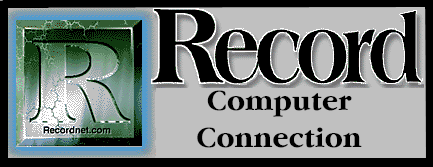

Keeping up with the break-neck pace of the computer industry can be a dizzying task, but as your dutiful correspondent with the future, it is my job to keep you informed of changes on the horizon. So hang onto your modem because ISDN is here and it's coming to your neighborhood soon. Your old (or maybe new?) modem is now officially obsolete, along with those old telephone connections since the emergence and rapid deployment of ISDN.
ISDN is techno-babble for Integrated Services Digital Network and specifically refers to a type of technology in the transmission of information via telephone lines. The keyword in ISDN is digital. The counterpart of digital is analog. There are two methods of performing tasks electronically....analog or digital.
Analog data transmissions involve a continuous signal that is variable and subject to distortion and noise. Your present phone system utilizes analog technology to transmit sound. Amplifiers are often used to boost the signal. Those bad connections and crackling sounds during phone calls are caused by drift and distortion in the continuous signal.
Digital transmission signals, in comparison, are either on or off, rather than continuous. Without getting too technical, the simplicity of this binary, on/off circuitry makes digital ISDN connections crystal clear and free from interference.
Perhaps the biggest advantage of digital technology, and the one most pertinent to the computer industry, is the ability of ISDN to transmit huge amounts of information at a rapid speed. With the advent of the World Wide Web on the Internet and the massive amounts of graphic files available for upload and download, ISDN is even more timely.
Ordinary phone service carries data or conversation at a maximum of 28,000 bits per second (bps). An ISDN line can transmit up to 128,000 bps for voice, audio, data or video in various combinations. This measurement of data capacity is referred to as bandwidth. ISDN has huge bandwidth...analog is very narrow in comparison.
ISDN will not only allow surfing at warp speed on the Internet, but will usher in video conferencing, digital audio transmissions, and a new age of telecommuting. One ISDN line will handle up to three separate "conversations", at once. Your computer, voice, and fax line, each with different numbers, would be managed through the same ISDN line. You could have a voice conversation while video-conferencing on a joint project with a co-worker at remote location, and receive faxes ... all simultaneously.
The good news is ISDN operates through the same copper twisted- pair telephone lines that currently handle only one analog transmission. ISDN will, however, require new hardware to interface with your existing computer.
Once the phone company has installed the ISDN line, a network termination device (NT-1) is necessary to convert the ISDN signal into a form that your computer can understand. A terminal adapter (TA), the digital equivalent of a modem, then connects to the NT- 1. All your other communication devices then plug into the NT-1. Many of the newer TAs include a built-in NT-1. The average cost for this hardware is currently around $500.
Installation and monthly costs from the phone company are surprisingly reasonable. Currently, Pacific Bell is waiving the one-time installation charge of $125-$150 in exchange for a two- year commitment. The monthly charges for ISDN range from $28.50 to $36.00.
You may not have to choose immediately, but somewhere in the near future, you will be
asked to choose from ISDN or POTS...Plain Old Telephone Service.
Feedback? E-Mail cschuler@ceeprompt.com